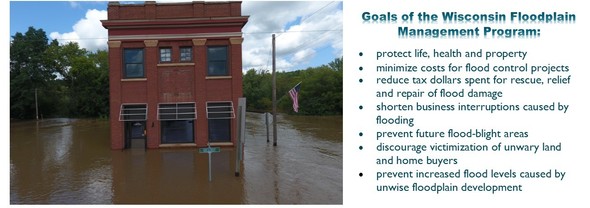|
Volume 18 Issue 1 March 2019

For communities that participate in the National Flood Insurance Program (NFIP), substantial damage determinations are required by local floodplain management ordinances after a flood event. These ordinances must be in place for residents of a community to purchase flood insurance.
It is common to think substantial damage merely describes a structure that has sustained a large amount of damage by a flood or other disaster. However, substantial damage is a specific term that applies to a damaged structure in a special flood hazard area (SFHA) — or floodplain — for which the total cost of repairs is 50 percent or more of the structure’s equalized assessed value before the disaster occurred. This applies to all buildings located in a designated SFHA, regardless of whether the building has flood insurance coverage and regardless of the cause of damage.
For example, if a structure’s equalized assessed value before the damage was $200,000 and repairs are estimated to cost $120,000, that structure is substantially damaged. Land value is excluded from the determination. The decision about a structure being substantially damaged is made at a local government level, generally by the building/zoning official or floodplain manager. The total costs of repair include both structural and finished material and labor.
To calculate substantial damage, the local official makes a visual inspection of a house, making notes of the impacts to the structure itself and, when possible, to the interior. The official uses these notes, coupled with other information such as property valuations and estimated costs to repair, to calculate the percentage of flood damage to the structure. Once a determination on the percentage of damage is made, local officials then share that information with the property owners. All flood damage repairs require permits from the local community. Property owners should contact the local building official to obtain permits before beginning the work. Depending on local codes and ordinances, not complying with the permitting process can have serious consequences.
Property owners who have a flood insurance policy and a substantially damaged building may be able to use additional funds from their flood insurance policy (up to $30,000) to help defray the costs of elevating, relocating or demolishing a structure. For more information on this provision known as Increased Cost of Compliance, contact your insurance agent. If you have any questions on the substantial damage process, please contact Michelle Staff at 608-266-3093 or Michelle.Staff@Wisconsin.gov
|